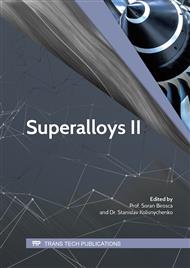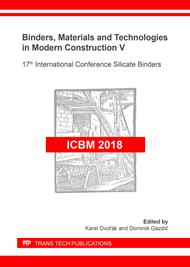p.137
p.143
p.149
p.155
p.161
p.167
p.173
p.180
p.186
Evaluation of Microstructure, Phase Composition and Hardness of Alternative Abradable Ceramic Coating Systems Produced by Means of Atmospheric Plasma Spraying
Abstract:
Only a few types of commercially available high temperature ceramic abradable coatings are presented on the market and most of them consist of partially stabilized yttria zirconia with polymer porosity former agent and/or hBN solid lubricant. The basic demand placed on abradable coatings include balance between hardness and erosion resistance. The contribution focuses on the description of microstructure, phase composition and hardness of alternative atmospheric plasma sprayed ceramic abradable coatings deposited from four different experimental powder mixtures: (i) commercial yttria-zirconia + 5 wt. % of experimental BaF2/CaF2, (ii) commercial yttria stabilized zirconia + 10 wt. % of experimental BaF2/CaF2, (iii) R&D powder SrxTiOy and (iv) R&D powder SrxTiOy + 5 wt. % of polyester. The abradable coating systems were of ~ 150 μm thick CoNiCrAlY bond coat and of ~ 800-1000 μm thick ceramic top coat. The microstructure and phase composition of all atmospheric plasma sprayed coating systems were evaluated by the means of scanning electron microscopy and X-ray diffraction techniques. To estimate coatings basic parameters the Rockwell hardness HR15Y was measured.
Info:
Periodical:
Pages:
161-166
Citation:
Online since:
August 2019
Price:
Сopyright:
© 2019 Trans Tech Publications Ltd. All Rights Reserved
Share:
Citation:



